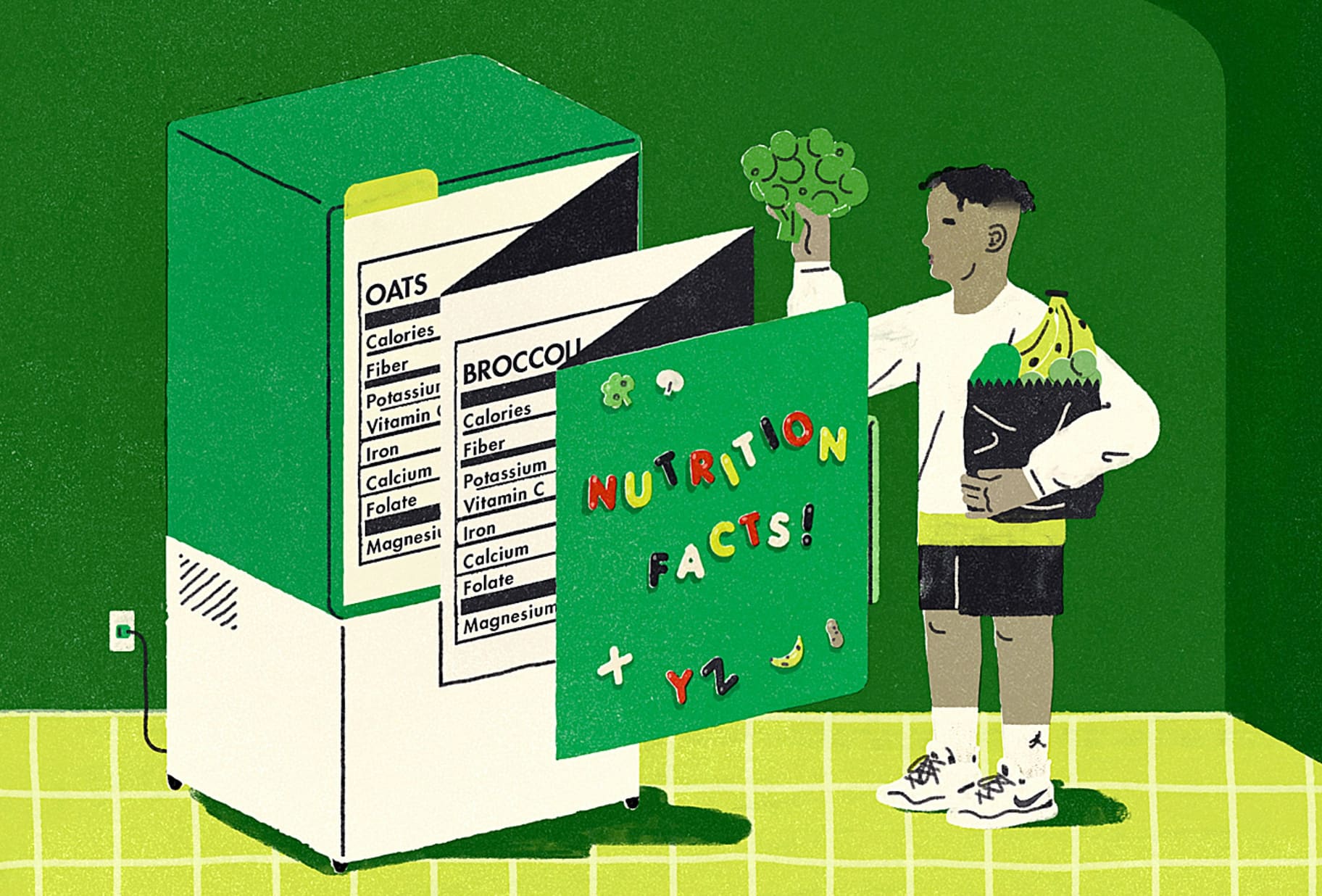Fundamentals of a Plant-Based Diet
Coaching
Cutting out meat and dairy doesn’t guarantee better health. Follow these five tips to do plant-based the right way.

If you hear “plant-based” and immediately think “healthy!” you passed the test. Research has linked the diet with a lower risk of cardiovascular and other diseases, easier weight management, and better gut health.
That said, while 39 percent of plant-based eaters surveyed in a recent Mintel poll said health was their main reason for changing their diet, these eaters run into some of the same nutrition problems as everyone else — and they might think they’re eating healthier than they actually are, says Ryan D. Andrews, RD, a principal nutritionist at Precision Nutrition and a certified strength and conditioning specialist.
Andrews, who’s been eating a plant-based diet for 15 years, has witnessed new and veteran vegans alike make the same mistakes that can ultimately undo much of their wellness-minded effort. Avoid those pitfalls by following his top five tips for healthier plant-based eating.
These eaters run into some of the same nutrition problems as everyone else — and they might think they’re eating healthier than they actually are.
Ryan Andrews
RD, a Principal Nutritionist at Precision Nutrition and a Certified Strength and Conditioning Specialist
1. Get to know your macros.
Consuming the right mix of macronutrients (10 to 35 percent of daily calories from protein, 45 to 65 percent from carbs, and 20 to 35 percent from fat, according to the U.S. Department of Health and Human Services) is key for getting the most out of any diet. But knowing which plant-based foods count as which can be tricky. For example, despite having a decent amount of protein, nuts actually count more as a fat source. Lentils and chickpeas have more carbs than they do protein, while seeds and olives pack a lot of (healthy) fat. And surprisingly, oats deliver a nice shot of protein along with their carbs.
While you don’t want to get stuck in categorical thinking, do your research so you have a better sense of nutrient breakdowns. That way, you can build go-to meals that deliver on all your needs.
2. Rethink your plate.
Many newbie plant-eaters meal-plan around the traditional Western diet: one large, starring portion of animal protein; one serving of starchy carbs, like potatoes or rice; and one serving of vegetables. This could encourage you to become dependent on plant-based “burgers,” “sausage,” “chicken” and “ground beef” and let the other foods on your plate, the real stuff, sing backup.
Alternative-meat products are fine in small amounts (say, a couple of times per week), but they often contain a lot of sodium and filler ingredients. And when they’re the main event of your meal, there’s less room for nutrient-dense whole foods that nourish you. Fill your plate with more minimally processed plant foods, like legumes (tofu, lentil pasta), and rely on protein-rich grains and nuts; seeds, such as quinoa and hemp seeds; and even veggies (like broccoli) to add even more protein.
3. Choose real as often as possible.
With the recent uptick in plant-based eating, food companies have expanded their packaged options in the category. The problem: While vegan pizza and ice cream might seem like better versions of their meat- and dairy-based originals, they can be highly processed and void of nutrients. That’s OK on occasion (everyone deserves a good pizza every now and then), but for most meals, try to reach for whole or minimally processed foods with just a few ingredients you can pronounce.
4. Know the difference between full and fueled.
Because plant-based foods tend to be filling (all that fiber!), you might think you’ve eaten enough to fuel your body for exercise, work and everyday activity when, really, you could be lacking key macronutrients and calories for balanced energy. If your mental or physical performance progressively declines, you’re slowly losing strength and muscle, or you’re not recovering as quickly after workouts as you used to, you may need to eat more. You can also explore adding supplements for any major nutrition gaps, but always chat with your doc before doing so.
5. Keep it simple.
The variety of fruits and vegetables (and the debates about which are best) can become overwhelming, even intimidating, to someone who’s suddenly more interested in them. To avoid brain drain and create positive habits, look at your eating plan as a dietary pattern (in the sense that it’s simply the way you eat) rather than a restrictive “diet,” and don’t overthink it. Instead, just keep your fridge stocked with real foods and listen to your body, eating when you’re hungry and stopping when you’re content. Any healthy-eating lifestyle really comes down to that.
Words: Brooke Slade
Illustration: Gracia Lam

Take It Further
For more expert-backed guidance on recovery, as well as mindset, movement, nutrition and sleep, check out the Nike Training Club app.
Take It Further
For more expert-backed guidance on recovery, as well as mindset, movement, nutrition and sleep, check out the Nike Training Club app.